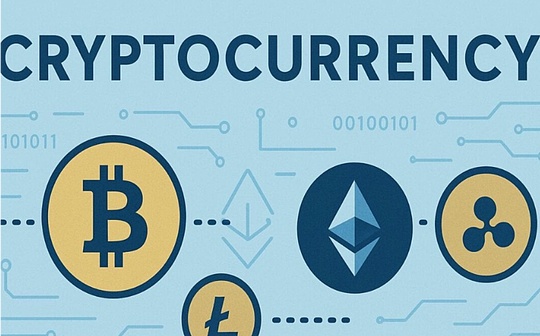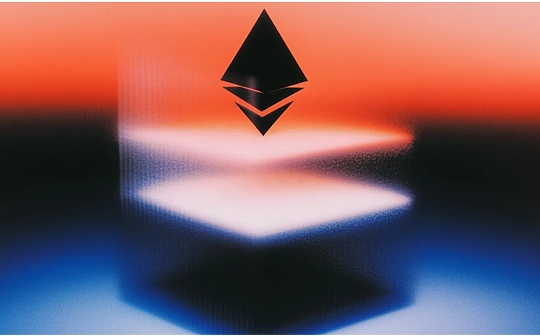
introduction
In 2025, the global financial market continues to show a complex and contradictory scene.Investor margin debt hit record highs, market sentiment indicators showed signs of overly optimistic, the S&P 500 hit key trend lines, dark pool trading activity increased, cryptocurrency markets remained resilient, while commodities, especially metals, showed strong rotation signs.Together, these phenomena constitute a market environment full of opportunities and hidden risks.This article will objectively analyze current market trends, potential risks and possible future trends based on the latest data in 2025, combine market trends and multiple perspectives, aiming to provide investors with a comprehensive reference.
1. Investor margin debt: record leverage level
Latest data
According to the latest data released by the U.S. Financial Industry Regulatory Authority (FINRA) on June 1, 2025, investors’ margin debt has reached$1.008 trillion, hit a record high, year-on-year growth24.54%.This level not only surpassed the peak in 2021, but also far exceeded the debt scale during the Internet bubble period in 2007 and 2000.Compared with the US GDP, the current margin debt is3.07%, at the upper limit of the historical normal range (2.52%-3.34%), but the annual increase is as high as 8.48%, showing a rapid expansion of leverage use.
Historical background and significance
Margin debt reflects the scale of securities purchased by investors through borrowing and is often seen as a barometer of market enthusiasm.Historically, high margin debt levels have often been associated with the top of the market, such as:
-
The Internet bubble in 2000: Margin debt surged, followed by a collapse in the market, and the Nasdaq fell nearly 80%.
-
Subprime mortgage crisis in 2007: Debt levels reached their highs at that time, which subsequently triggered a global financial crisis.
-
High-growth bubble in 2021: Some tech stocks fell 90%, although the overall market avoided a full-scale collapse through rotation.
The current debt scale of $1.008 trillion shows that market participants have extremely high confidence in future price increases.However, high leverage also means that the market is more vulnerable to negative impacts.Once market sentiment reverses or triggers force closing (margin calls), it may lead to rapid deleveraging and trigger severe price fluctuations.
Perspective analysis
-
See more opinions: Some market analysts believe that high margin debt reflects strong economic confidence and corporate profitability, especially in the context of technology and artificial intelligence-driven growth.The S&P 500 continued to hit new highs in 2025, partially supporting this optimism.
-
Bearish view: Other analysts warn that high leverage is unsustainable.Historical data shows that after the rapid growth of margin debt is often accompanied by market adjustments.For example, the high-growth stock crash in 2021 caused some individual stocks to fall sharply, although the overall market maintained stability through rotation.Current high debt levels may indicate similar risks, especially if there is an unexpected shock to the macro economy (such as inflation exceeds expectations or interest rates rise).
Risk warning
Although margin debt data is a lag indicator (usually delayed release by one month), its absolute level and growth rate still need to be closely watched.If the market experiences continuous downward pressure, forced closing of positions may trigger a chain reaction and increase the selling pressure.Investors should be wary of potential “fast and fierce” selling risks.
2. Barclays Euphoria Index: Overheating Signals of Market Sentiment
Latest data
According to the latest Barclays report, the Euphoria Index reenters its entry in July 2025Overbought range, this is another overheating signal since July 2024, February 2024, and market highs in 2021 and 2022.The index measures investor sentiment, trading volume and option market activity to assess whether the market is in an overly optimistic state.
Historical performance
-
July 2024: The euphoria index enters overbought, resulting in subsequent market adjustments (non-full collapse).
-
2022: After the high point, the market experienced a significant pullback, especially in the technology sector.
-
2021: The high-growth stock bubble burst, and some individual stocks fell 90%, but the overall market maintained stability through rotation.
The current overbought status combined with high margin debt strengthens the signal of market overheating.However, history shows that overbought does not necessarily lead to a collapse immediately, but may indicate short-term adjustments or sector rotations.
Perspective analysis
-
See more opinions: Some investors believe that overbought reflects the market’s continued enthusiasm for growth areas such as artificial intelligence, cloud computing and new energy.Strong corporate earnings, such as Google’s latest earnings, support this optimism and may continue to push up the index in the near term.
-
Bearish view: Market history shows that overbought is usually accompanied by subsequent volatility increases.For example, after the high-growth stock bubble burst in 2021, the market turned to defensive sectors (such as utilities and consumer goods).Currently, defensive sectors are showing weak performance, while momentum and growth stocks dominate the market, increasing the risk of a pullback.
Market meaning
The overbought status of the Euphoria Index suggests that market sentiment may be approaching its peak.Investors should pay attention to whether there are signs of inflows in defensive sectors or weakening of momentum stocks, which may be a precursor to the market turnaround.In the short term, the market may continue to be driven by positive gamma, but long-term risks are accumulating.
3. S&P 500: Trendline Breakthrough and Potential Correction Signals
Latest data
As of July 25, 2025, the S&P 500 index reached6,370, accurately touched the long-term trend line, breaking through the previous key resistance level6,350and enter the positive gamma area.The market is characterized by “dull market”, continuing to form higher lows and higher highs, and the current key support level is6,200.If it falls below this level, it may indicate a bear market intention.
Technical Analysis
-
The positive gamma effect: The positive gamma state of the options market means that market manufacturers amplify price increases through hedging.This explains why the S&P 500 broke through 6,350 and hit 6,370.If the breakthrough6,400The next goal may be6,500.
-
Overbought signal: Technical indicators (such as RSI) show that the market is in an overbought state, increasing the possibility of a short-term pullback.However, the market has not yet formed a lower low, indicating that the trend is still bullish.
-
Defensive sector performance: Defensive sectors (such as utilities and consumer necessities) continue to be weaker than momentum stocks, indicating that the market still prefers high-risk assets.This imbalance may indicate rotation or adjustment.
Perspective analysis
-
See more opinions: CTA (Commodity Trading Advisor) estimates show that momentum funds are forced to buy in the rising market, pushing up the index.Retail investors-led 0DTE option trading (accounting for 2/3 of S&P’s trading volume) further amplified market enthusiasm.In the short term, the market may continue to rise with a target of 6,400-6,500.
-
Bearish view: High-level fluctuations in markets are usually difficult to short, but over-buying status and high leverage increase the risk of pullback.Historical data shows that after the S&P 500 hits the trend line (such as in 2021), it often undergoes short-term adjustments or sector rotations.A break below 6,200 may be a key bearish signal.
Future Outlook
The short-term trend of the S&P 500 is still bullish, but investors need to pay attention to the following signals:
-
Defensive capital inflows: If defensive sector capital inflows occur for 3-5 consecutive trading days, it may indicate a market turn.
-
VIX Volatility: The last week of July (VIX weeks) has been historically accompanied by rising volatility, which may trigger market fluctuations.
-
Options Market Trends: The craze for 0DTE options may lead to amplification of short-term volatility, especially during the financial report season.
4. Dark pool trading activities: potential signals of institutional trends
Latest data
In January 2025, dark pool trading accounted for the U.S. stock market trading volume51.8%(Bloomberg data).In the past 2-3 days, dark pool trading activity has increased, including “phantom prints” and delayed reporting transactions, involving assets such as S&P 500 ($SPY), triple-levered S&P ($SPXL) and Nasdaq ($QQQ).The average daily dark pool transaction volume is approximately$46 billion, slightly above the average since 2025, but has not reached extreme levels yet.
Background and meaning
Dark pool trading is the way institutional investors execute bulk transactions in non-public places, aiming to reduce market shocks.The recent increase in dark pool activity may reflect that institutions are reconfiguring positions, but there has not yet been a large-scale sell order cluster, which indicates that institutions are not fully bearish on the market.
Perspective analysis
-
Neutral view: The increase in dark pool trading may be just an institutional adjustment of positions (such as selling leveraged ETFs, such as Nvidia 2x), rather than a full withdrawal.The current data does not support the conclusion of large-scale short selling.
-
Bearish view: If the trading volume of the dark pool continues to rise or there are concentrated selling orders, it may indicate that institutions will begin to reduce their positions, especially high-valuation technology stocks.This will be an early sign at the top of the market.
Risk warning
The opacity of dark pool transactions may be detrimental to retail investors.Investors should pay attention to whether dark pool trading volumes have increased significantly and whether they are accompanied by other selling pressure signals (such as rising VIX or strengthening defensive sectors).
5. Cryptocurrency Market: Resilience of Ethereum and Bitcoin
Ethereum
-
Latest News: Ethereum has experienced a sharp decline recently, but remainsHigher low points, forming a bullish structure with higher highs and higher lows.In February 2025, the Ethereum Foundation transferred its multi-signment wallet to DeFi50,000 ETH(Value is approximately US$131.6 million), supporting the development of the DeFi ecosystem.
-
Technology upgrade: The Pectra upgrade is scheduled to be launched in April 2025, including EIP-7702 (improving wallet experience) and EIP-7251 (improving staking efficiency), which is expected to enhance the long-term attractiveness of Ethereum.
-
Market performance: Ethereum market share rises to11.6%, driven by institutional funds flowing into the ETH ETF.
Bitcoin
-
Latest News: The price of Bitcoin exceeds$107,000, but the demand indicator turns negative, reflecting the increase in supply of miners.The market is in a consolidation stage, and the four-hour chart shows three “tweezers” patterns, suggesting potential upward action energy.
-
Institutional participation: MicroStrategy purchased 4,980 bitcoins for US$531.9 million, with a total holding of nearly 600,000.Bitcoin ETF net inflows of $14.9 billion, accounting for 83% of crypto products inflows.
-
Long-term prospects: Tether CEO said that the threat of quantum computing is far from the corner and Bitcoin will use quantum-resistant addresses.
Perspective analysis
-
See more opinions: The resilience of the cryptocurrency market reflects the ongoing interest of institutional and retail investors.ETH ETF inflows exceed BTC ETFs, indicating that market confidence in Ethereum is strengthened.
-
Bearish view: Decline in Bitcoin demand and bearish bets in options markets (concentrated at $85,000-$106,000) indicate short-term downside risks.If the stock market pulls back, cryptocurrencies may face greater volatility.
Market meaning
The bullish structure of Ethereum and Bitcoin is consistent with the positive gamma environment of the stock market, but its high volatility makes it more sensitive to macro risks.Investors should pay attention to the progress of ETF capital flows and technological upgrades.
6. Commodity and Industry Rotation: The Rise of Metals
Latest data
In 2025, the commodity market, especially the metal sector, showed strong momentum:
-
copper: It broke through key resistance in the past 24 hours and rose by about 20%.
-
Iron ore: It has soared recently, with some trading days rising by 30%.
-
Precious metals: Silver and gold approached $40 and $3,450 respectively, showing bullish patterns.
Background and meaning
The rise in metal prices reflects optimistic expectations for investment in artificial intelligence, electric vehicles and infrastructure, in which areas are in strong demand for copper, rare earths and other metals.Sector rotation indicates that funds shifted from high-valuation technology stocks to commodity and cyclical industries, similar to the rotation model at the top of the market in 2021.
Perspective analysis
-
See more opinions: Metal strength may continue, especially driven by global economic recovery and investment in AI infrastructure.The market’s renewed focus on the “neglected” sector provides investment opportunities.
-
Cautionary point of view: Rapid rise in commodity prices may trigger profit-taking, especially in the case of increased macro uncertainty (such as tariffs or inflation).
Future Outlook
The rotation of the metal sector may be a signal that the market has entered a late stage.Investors should pay attention to global demand indicators (such as China’s economic data) and the US dollar trend (the US dollar index is currently around 99 and has not broken through key resistance).
7. Comprehensive analysis and investment advice
Current market characteristics
-
High leverage and overheating emotions: $1.008 trillion in margin debt and the overbought status of the Barclays Euphoria Index indicate that the market is in a high-risk area.
-
Gamma drive: The S&P 500 broke through 6,350 and hit 6,370, and may continue to rise to 6,400-6,500 in the short term.
-
Signs of rotation: Funds flow from technology stocks to metals and cyclical sectors, indicating market dynamic changes.
-
Cryptocurrency Resilience: Ethereum and Bitcoin maintain bullish structure, but are sensitive to stock market volatility.
-
Dark Pool Activities: Institutions have adjusted their positions, but no large-scale selling orders have occurred.
Risks and Opportunities
-
risk:
-
Leverage collapse: High margin debt may trigger rapid deleveraging.
-
Volatility increases: The VIX week of the last week of July may bring market volatility.
-
Financial report uncertainty: Mixed financial results (such as Tesla’s weakness) may weaken market confidence.
-
Chance:
-
Section rotation: The metals and commodity sectors provide investment opportunities.
-
Cryptocurrency: Ethereum’s technology upgrades and ETF inflows may bring long-term potential.
-
Defensive strategy: At high markets, holding some cash or defensive assets (such as utility ETFs) can reduce risks.
Investment advice
-
Short-term strategy:
-
Continue to follow the positive gamma trend, but stay cautious and avoid chasing highs.
-
Pay attention to the 6,200 support level of the S&P 500. If it falls below, consider reducing your position.
-
Use options to hedge to avoid potential volatility risks.
-
Medium-term strategy:
-
Allocation of some funds to metal and commodity ETFs (such as copper ETFs or gold and silver ETFs) to seize the rotation opportunity.
-
Focus on Ethereum-related investments (such as ETH ETFs), but set stop loss to deal with volatility.
-
Long-term strategy:
-
Maintain a diversified portfolio and balance growth stocks, defensive assets and commodities.
-
Closely monitor macro indicators (such as inflation, interest rates and US dollar trends) to judge market turning points.
in conclusion
The financial market in 2025 is at a critical juncture: high leverage, overheating sentiment and sector rotation have jointly created an environment full of opportunities and risks.Investors should maintain a “abundance mindset” and seize the opportunities brought by rotation, while avoiding potential downside risks through technical analysis and risk management.The progress of the coming weeks, especially the VIX week and earnings season, will provide more clues to the market direction.(No investment advice)






